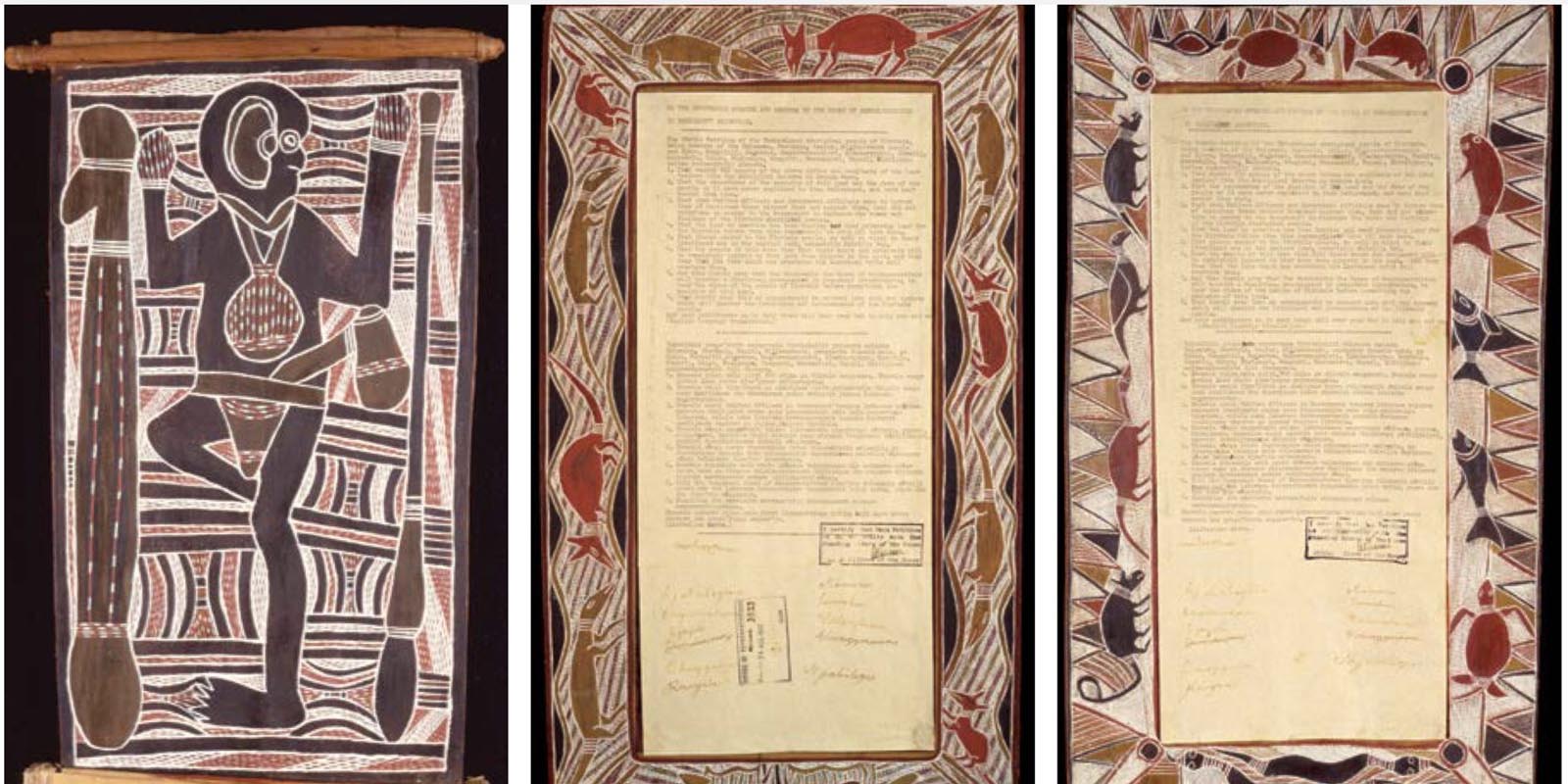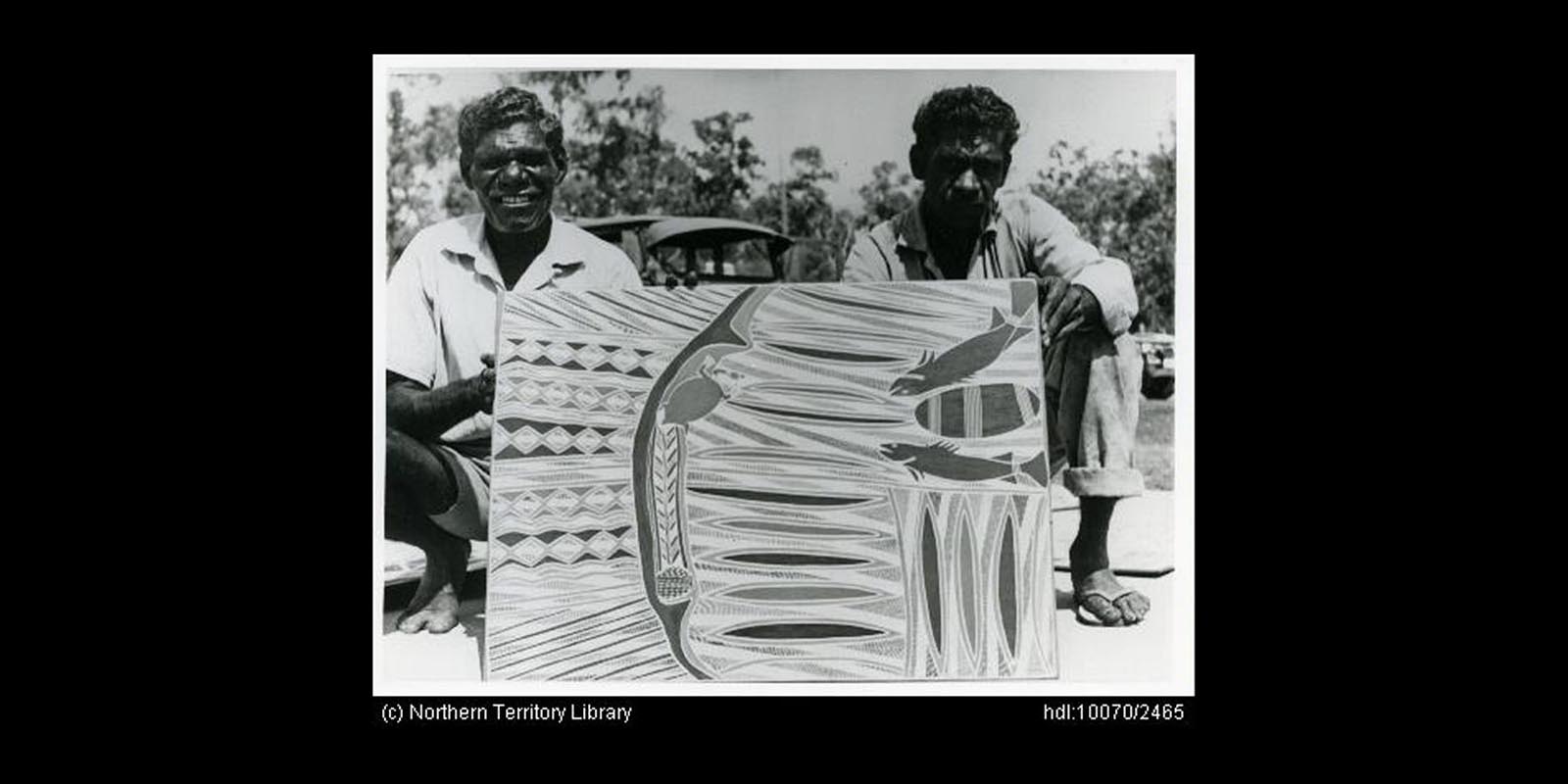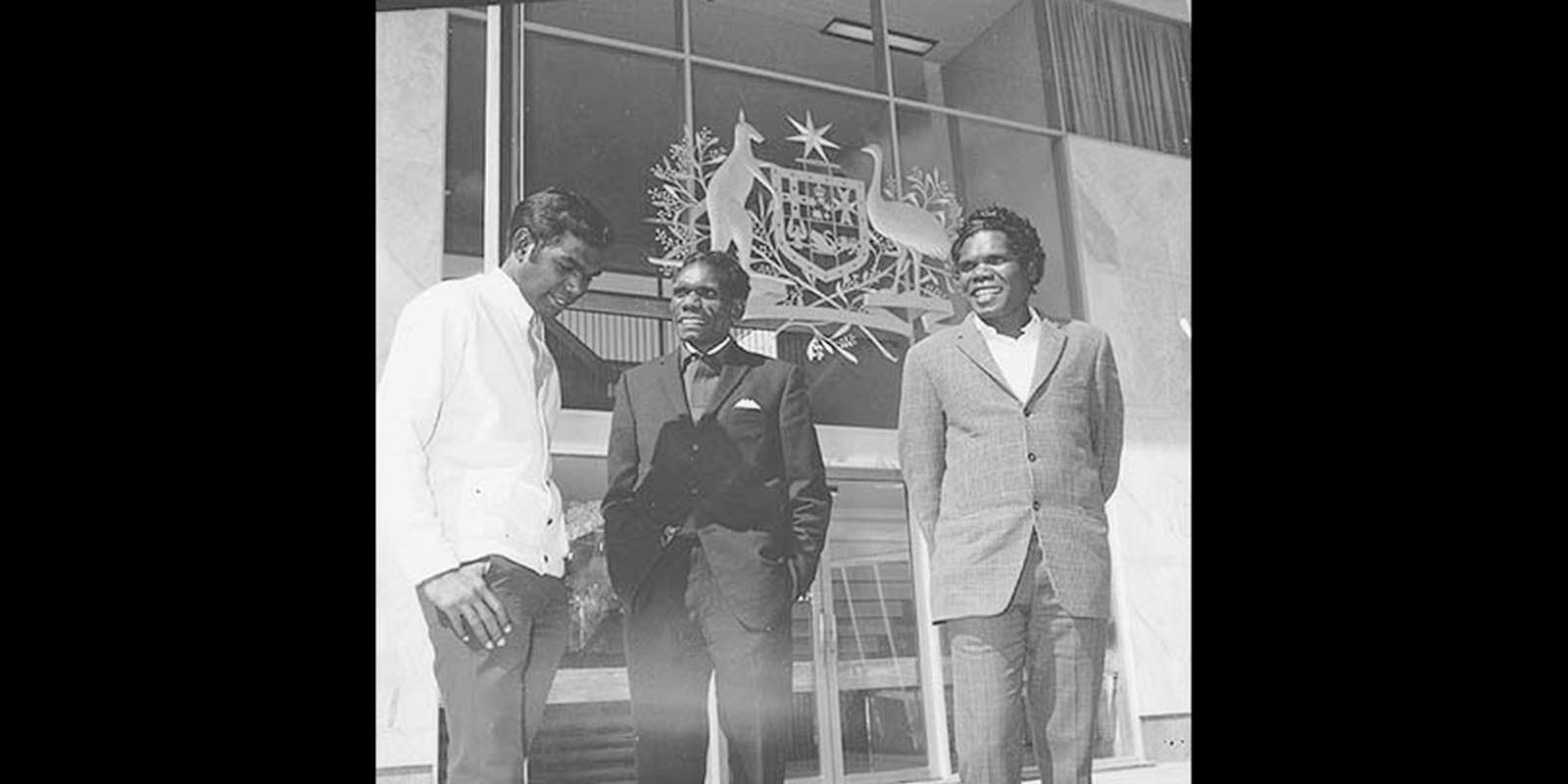The Yirrkala Bark Petitions are a series of petitions from the Yolngu people to the Commonwealth government. They are seen as the first documents that joined Indigenous Lore with Commonwealth Law as the petitions are the first traditional documents to have been recognised by the Commonwealth Parliament.
The Yolngu people are the people of Yirrkala in the Northern Territory. Yirrkala is on the east coast of the Gove peninsula in north-east Arnhem Land, 18 km south of Nhulunbuy.
The Yolngu community is made up of 13 clan groups who share Yolngu Matha as a main language, with the Clans having different dialects.
All of Arnhem Land was proclaimed as an Aboriginal reserve in 1931 and in 1935 the Methodist Church of Australasia established a mission at Yirrkala.


The Yirrkala Bark Petition. Image source: AIATSIS.
The First Petition
In 1963 on the 13th of March the Commonwealth government stole over 300 square kilometres of land from the Arnhem land reserve so that they could grant mining leases for bauxite mining - a rock with a high aluminium content. This was done without consultation with the traditional custodians and Elders were worried about the impact this would have on the land and access to their sacred sites.
Members of the Labor opposition party visited the Yolngu people and suggested that they document their worries and issues and a request for an inquiry.
There were two petitions created, one in English and one in Yolngu Matha. Both were typed up and placed on bark sheets which had been traditionally painted with the stories of the Yolngu moieties Dhuwa and Yirritja.
The petitions resulted in the Select Committee on Grievances of Yirrkala Aborigines, Arnhem Land Reserve, being established in Parliament. The committee acknowledged the rights the Yolngu people had set out and recommended to Parliament that compensation be organised, sacred sites be protected and that a committee should be set up to continue to monitor the mining projects.


Aboriginal driver Ted Cooper (right) poses with Naritjin Maymuru and one of his bark paintings. Naritjin Maymuru is a Yirrkala leader. Image source: ABC.
The following Bark Petitions
The 1963 petitions were the first in a series of Bark petitions. The petitions that followed occurred in 1968, 1988, 1998 and 2008.
The 1968 petition requested that a nearby township be renamed Nhulunbuy. The petition was successful, and the township still stands under that name today.
The 1988 bark petition, known as the Barunga Statement called for self-determination, land rights, compensation and Indigenous rights. The petition was presented to the then Prime Minister Bob Hawke who promised to begin working on a treaty by 1990 however this eventually fell through and talks of treaty ceased.
The 1998 Elcho Island and Yirrkala petitions aimed to begin diplomatic conversation between the leaders of the Yolngu and the Australian Parliament. This petition however didn’t hold as it was handed directly to the Prime Minister at the time John Howard and not to the House of Representatives as required.
After the Apology to the Stolen Generation by Prime Minster Kevin Rudd a bark petition was formed and handed to him. The petition requested recognition of Indigenous people’s rights in the Australian Constitution. Once again, this petition did not hold as it was not handed to the House of Representatives.
You can read transcripts of the petitions in both English and Yolngu Matha as well as learn a bit more about their history in The Yirrkala Bark Petitions, a resource written on NITV’s website.


In 1968, after their petitions to Parliament failed to gain recognition of their rights to land, Yolngu people from Yirrkala took their case to the Northern Territory Spreme Court. The leaders in this action, known as the Gove Land Rights Case, are pictured in Canberra in September 1970, outside the ACT Supreme Court building. Image source: ABC.
Sources
- East Arnhem Regional Council
- Yirrkala bark petitions 1963 (Cth), Documenting Democracy
